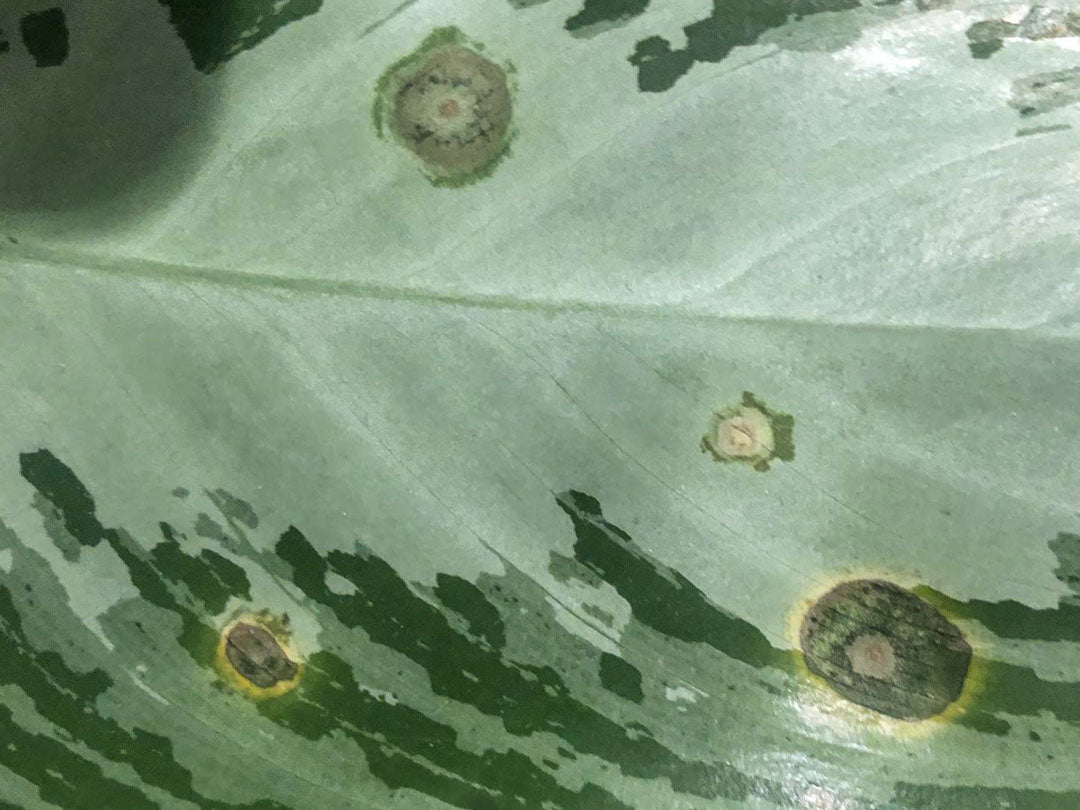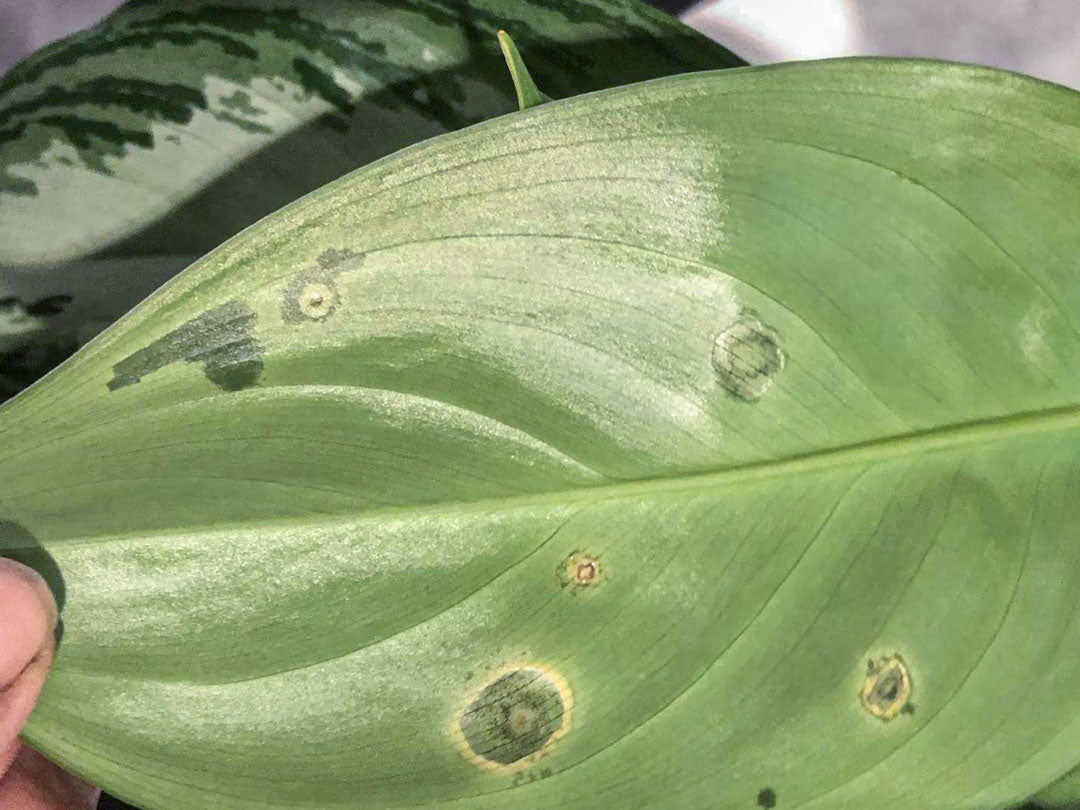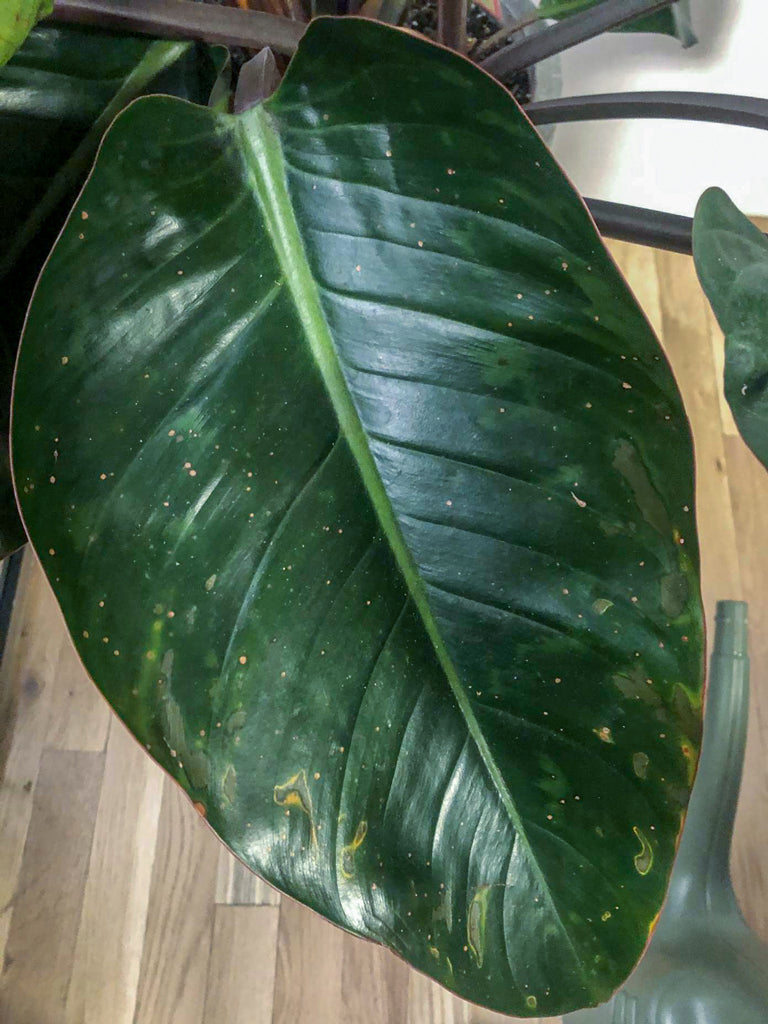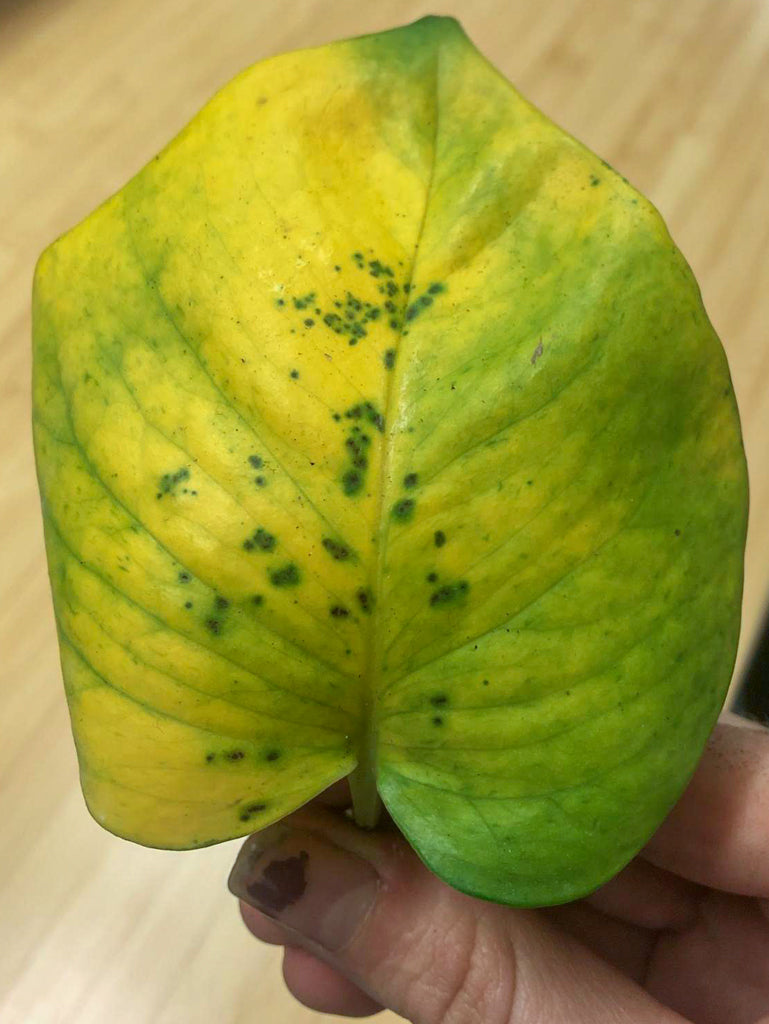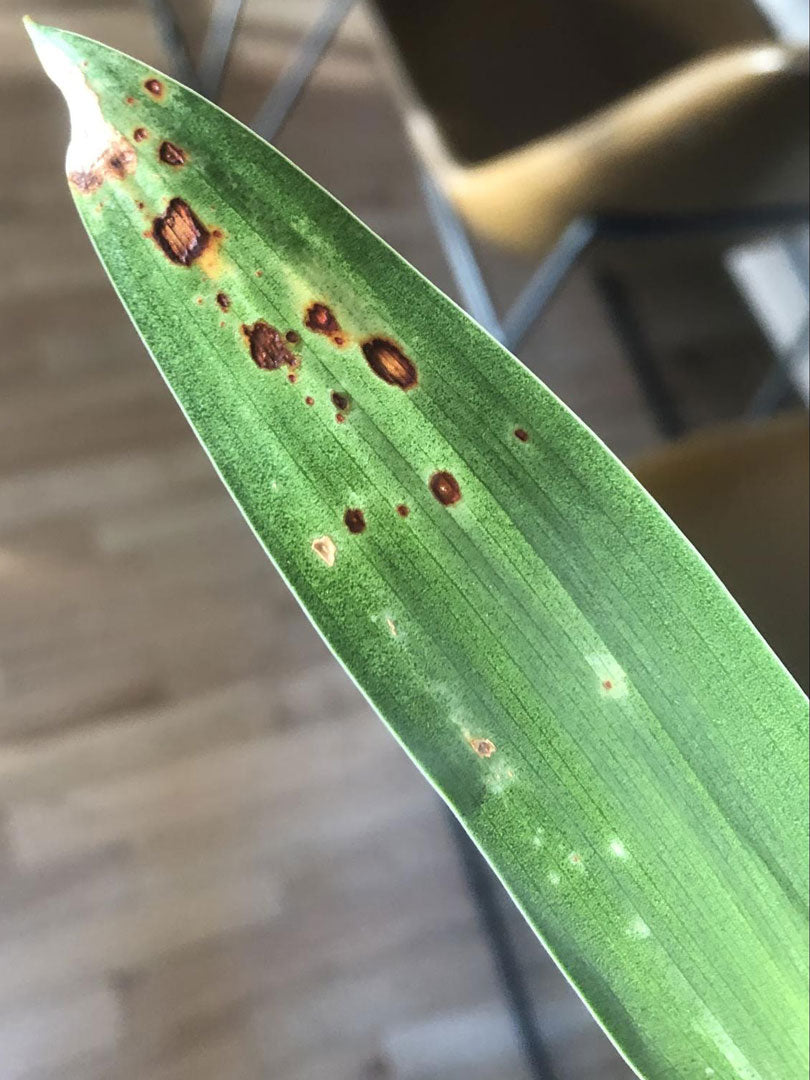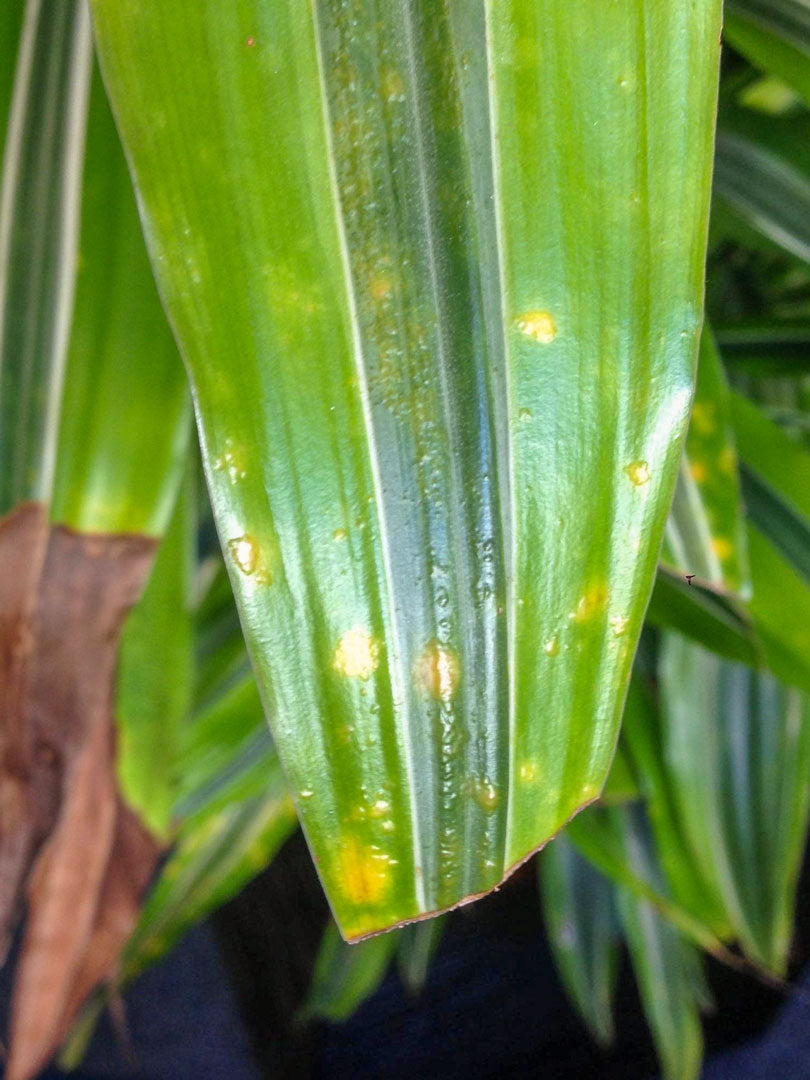Bacterial and Fungal Leaf Spot
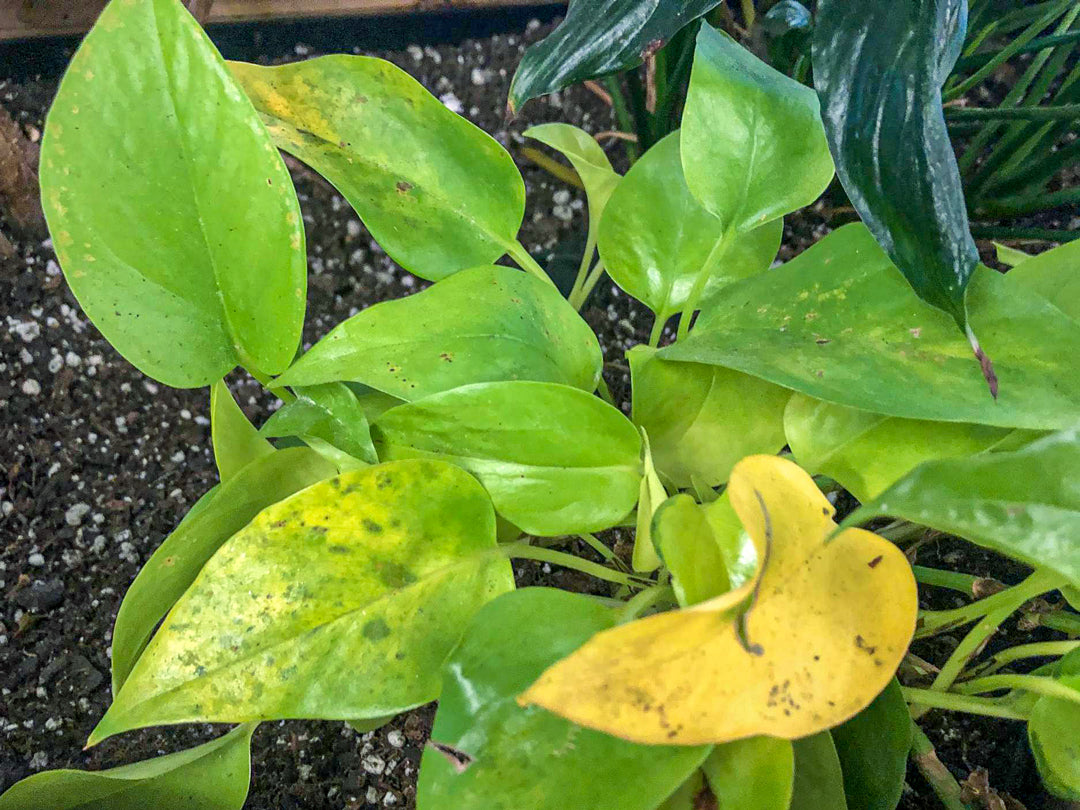
Leaf discoloration and changes in texture often point to issues related to watering, light, or pests. After properly troubleshooting an ailing plant for potential causes of plant stress and determining that it is not due to improper care, leaf spot or fungal infection should be the next area for investigation.
Step one: Identification
LEFT: An example of a fungal infection. RIGHT: An example of a bacterial infection.
How can you tell the difference between leaf discoloration from care related issues and bacterial or fungus spots? Concentric rings or dark margins are often present in both, and are the most apparent sign of an infection. Bacterial leaf spots and blights can occur at the same time as fungal leaf spots and differentiation can sometimes be difficult between the two.
Fungal bodies may appear as black dots in the spots, either in rings or in a central cluster. Over time, the spots may combine or enlarge to form blotches. Keep an eye out for a new leaf or shoot that collapses quickly, often with a "slimy dark appearance". Severely rotted tissue will often have a "rotten smell" because of secondary infection from other common bacteria found in soil and on plant surfaces. If the leaf is held up to a light source, and viewed backlighted, a water soaked area around the dead tissue can sometimes be seen and sometimes leaf spots will have a definite yellow outline or halo.
Symptoms of bacterial infection in plants are much like the symptoms in fungal plant disease. They include leaf spots, wilts, scabs, cankers and rots of roots and fruit; the most common symptom being leaf spots. In extreme cases, dark necrotic spots can spread to an entire leaf and kill it.
The best way to treat suspected bacterial infections is to cut out all infected plant parts in order to prevent further spread. You can also use a bactericide in the early stages of the disease. Certain bacterial infections (such as wilts) can be transmitted by insects as they bite and feed on plant tissue. Keeping your plants pest free reduces the risk of infection, as insects can be vectors for both bacterial and fungal infections.
Prevention and early diagnosis are essential to keeping your plants healthy. Healthy plants have stronger immune systems that make them less likely to get sick, so make sure to provide your plants with enough light and water (but not too much!). Practice good plant hygiene by pruning and making cuts with clean, sharp shears and regularly cleaning your tools with rubbing alcohol.
Step two: Causes
Bacteria and fungi typically enter through a wound in the plant. Natural openings in the leaves, flowers, and stems can also serve as entry points. Bacteria can be transferred to new plants by wind, water, contaminated soil and insects. Bacteria that cause leaf and flower spots, blights, and rots, are ever-present in the environment! They survive in diseased plant debris, and plants become particularly susceptible during warm weather and prolonged wet periods (overly wet soil or air) frequently encourage bacterial infections.
Step three: Prevention and treatment
Contaminated tissue cannot be treated, so prevention is most important and more effective than treatment. Affected foliage should be removed at the first sign of a bacterial or fungal infection. Removing the whole infected leaf is necessary. Then the remainder of the plant can be treated to prevent further damage, using a copper fungicide. Alleviate poor air circulation and crowded conditions as dry air will help prevent further spread. Copper fungicide is not safe for bromeliads or ivy plants, and it should be diluted extra on new growth which is more sensitive.
